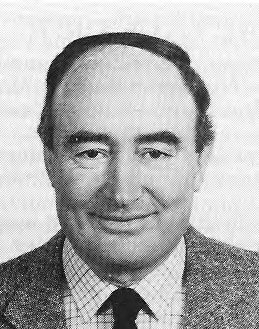
History of Portarlington Golfclub 1908-1987
Chapter:Recollections by George O'Sullivan Captain 1971

My earliest memories of Port arlington Golf Club go back to the time when I caddied for my father on Sundays. The Course was somewhat different in those days with large bunkers crossing the fairways at some of the holes. The only remaining legacy of that era of any significance is the grass bunker on the right of Joe Canning's second plantation. There was a time when that particular hazard was quite a severe sand (or to be more accurate -"earth") bunker. There was at least three such bunkers at the second, and the observant golfer can still see the outline of two of these hazards at about the 150 yard mark on either side of the fairway and again at about 300 yards from the tee, on the right half of the fairway.
The ladies in particular found great difficulty in getting past the treacherous cross bunker set back conveniently from the the 7th green, inviting the tee shot to be struck over the hazard from where it could run up onto the green. Woe betide the shot that failed to carry the hazard as its construction (although not particularly deep) was of such mean and devilish design that the next shot might have to be played side-ways or even backwards towards the tee!
However, the most intimidating of all of these hazards was the one that traversed the 9th fairway at the crossing point from the 5th Green to the 6th tee. The scar that remained following its demise is still quite evident today, although it must be upwards of thirty-five years since it was removed. This particular bunker extended over a wide stretch of the middle of the fairway, and it dominated the hole. It had a dual role, as like the bunker in front of the 7th Green, it acted as a shelter for the sheep which grazed the Course in those days. Recovery was a far more difficult and uncertain task than is the case from the present green side bunkers. The bunker on the 9th was considered by many to be unfair as in addition to the destruction wrought by the sheep, it would catch the well-struck drive of the good golfer in summer conditions.
My father, apart from his intense interest in the Club as Hon. Secretary, and Captain during the 50th Anniversary of the Club in 1959, was on his day quite a good middle to high handicap golfer. He was a short hitter, but unlike another member of the family, he had quite a deft touch around the greens. I caddied for him in what was probably his most successful year as a player in 1950. He POssesses a statuette of a Golfer, inscribed "Golfer of the Year 1958" which must have been one of the first occasions in which the Club presented such a prize. However, in 1950 he won Harry Russell's Captain's Prize and was runner-up in Jim Daly's President's Prize having been beaten in a play-off by one of the Barton Cup heroes of that particular year namely D. Cotter. It was in that particular competition that the infamous bunker on the 9th had a very influential bearing on the result.
My father drove down the 18th hole in the playoff with victory firmly in his grasp. His drive found the left hand rough from where he failed to get clean contact with his second shot and his ball got swallowed up in the dreaded cross bunker. It came to rest in what could only be described as a bunker within a bunker which had been hewn out of the facing by the action of the sheep over many years. He eventually completed the hole in a 7 or an 8 and lost the play-off by 1 shot.
Some years later he was elected Hon. Secretary and he held that office for several years. During that period he lobbied successfully agaInst considerable and sceptical opposition to put an end to the sheep grazIng lettings. The fairway bunkers on the 2nd, 6th, 7th and 9th holes which had been rarely maintained satisfactorily were filled in and levelled, although the two bunkers which now guard the approach to the 8th Green were added. It has been said that the death knell of the infamous cross bunker on the 9th was sounded when James J. O'Sullivan was elected Hon. Secretary!